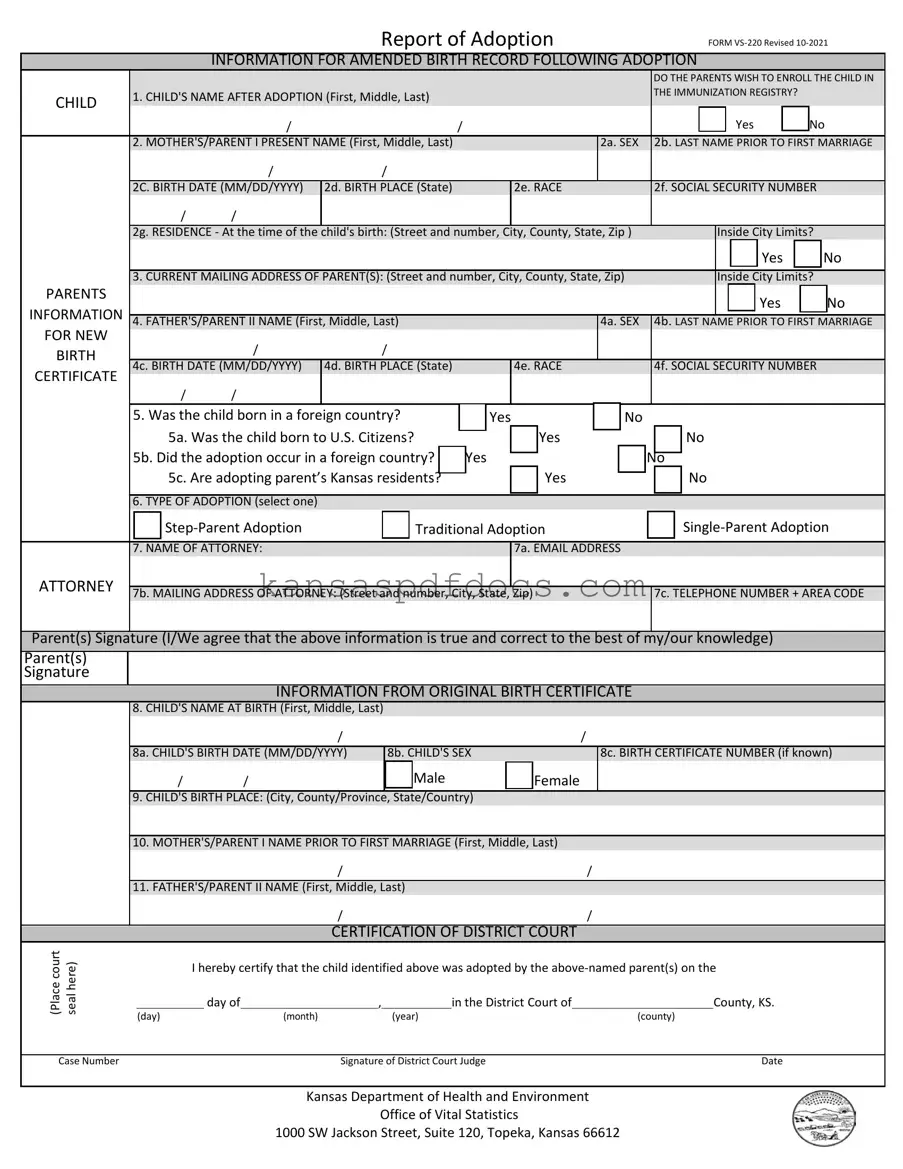Adoption is a significant and transformative event in a child's life, and the Kansas Report of Adoption form plays a crucial role in documenting this important milestone. This form is essential for amending a child's birth record following an adoption, ensuring that the new legal parents are recognized and that the child's identity is accurately reflected. Key information required on the form includes the child's name after adoption, details about the adoptive parents, and the type of adoption being pursued—whether it be a step-parent, traditional, or single-parent adoption. The form also gathers information about the child's original birth certificate, including their name at birth, birth date, and place of birth. Additionally, the form asks whether the child was born in a foreign country and whether the adoption occurred there. This information is vital not only for creating a new birth certificate but also for maintaining accurate records with the Kansas Office of Vital Statistics. The process ensures that the adopted child's legal identity is established and that their new family structure is officially recognized, while also allowing for future access to vital records under specific conditions. Each detail on the form must be completed accurately, as it becomes part of a permanent record that can only be altered through a court order or a written request from the adopted person once they reach legal age.
